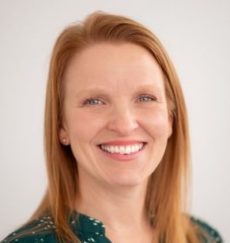
This week, I had the pleasure of meeting a new doctor who’ll be helping one of my kids navigate a chronic condition.
I sat in my office, not hers, on a comfy chair I dragged in from the kitchen. My daughter snuggled up next to me on a matching seat and got right to work flipping her hair to achieve that perfect Zoom-ready look. Our doc, at 39 weeks pregnant, also appeared to join this meeting from home, presumably with her feet propped up somewhere off camera.
Even though we were talking about some tough subjects, I found myself thinking about half way through this rather extensive visit that I was actually enjoying the time together.
In a year-plus during which COVID-19 has determined how, when and where many of us receive our healthcare, this was my first venture into telehealth. And I liked it. I really liked it.
I know: Quite a few seniors caught onto this before me. Not the first time I’ve been totally uncool for my age.
Telehealth has been all the rage in long-term care, and according to the Kaiser Family Foundation, among plenty of community-dwelling Medicare recipients, too. More than one in four people on Medicare had a telehealth visit last summer or fall, according to this Kaiser analysis from last week.
Fortunately, I was well-prepared for a virtual meeting, given that’s the only way I’ve met most of my colleagues and the researchers and providers I’ve interviewed since joining the McKnight’s team as a fully remote employee four months ago.
But some seniors might not be as comfortable with the concept. Kaiser found that 56% of Medicare beneficiaries used just a phone to connect with their provider, which would seem to undermine much of the benefit we experienced.
Here’s what I liked, and what I (being of sound, non-medical mind) think would make telehealth more meaningful, regardless of where the patient lives:
Convenience. I don’t live in a major city. While we have plenty of solid hospital systems within about an hour’s drive, their specialists tend to be, well, an hour away from us. To get to an appointment, see the doc and return home means a half day off from work. For long-term care residents, especially those with cognition issues, the inconvenience of seeing a far-away specialist (or even a nearby one) could be less about time and more about confusion or missing out on other valued activities, like music therapy or a favorite hot meal.
Comfort. Yes, we were in our cozy chairs, but, no, we weren’t in our PJs. Still, something about being in a safe place that is both private and familiar made what could have been a very stressful situation that much less stressful. We didn’t have to worry about getting lost, sitting in the waiting room masked for 30 minutes or thinking that a patient the next room over might hear private details of a near-teenager’s session. Surely, had either of us had our blood pressure taken, it would have been lower than what our regular physician finds in-office.
Connection. Had my daughter had any issues, I was ready to play tech support. Me of the modem-resetting, powering-down/powering-up, cell phone-ready-for-back-up alternatives. But we know that connectivity continues to be a major challenge for many skilled nursing facilities. Before you invest in the telehealth platform, invest in infrastructure! I can’t imagine having waited for this appointment for six weeks, only to have it turn into a poor-connectivity pity party. How frustrating for seniors and families, who just want answers without crashes.
Caring help. Regardless of where patients are being served, they deserve a physician who shows an interest in them and spends the time they need to get to the root of any physical or mental health issues. Our doctor never made us feel rushed. Throughout, she maintained eye contact (but not too much) and spoke slowly enough so that we could break in with questions.
We’ve all heard the expression, “Meet people where they are.” Telehealth brings a whole new realm of possibilities, then, even for late-adopters like me. I say go for it, young or old.
Kimberly Marselas is senior editor of McKnight’s Long-Term Care News.




